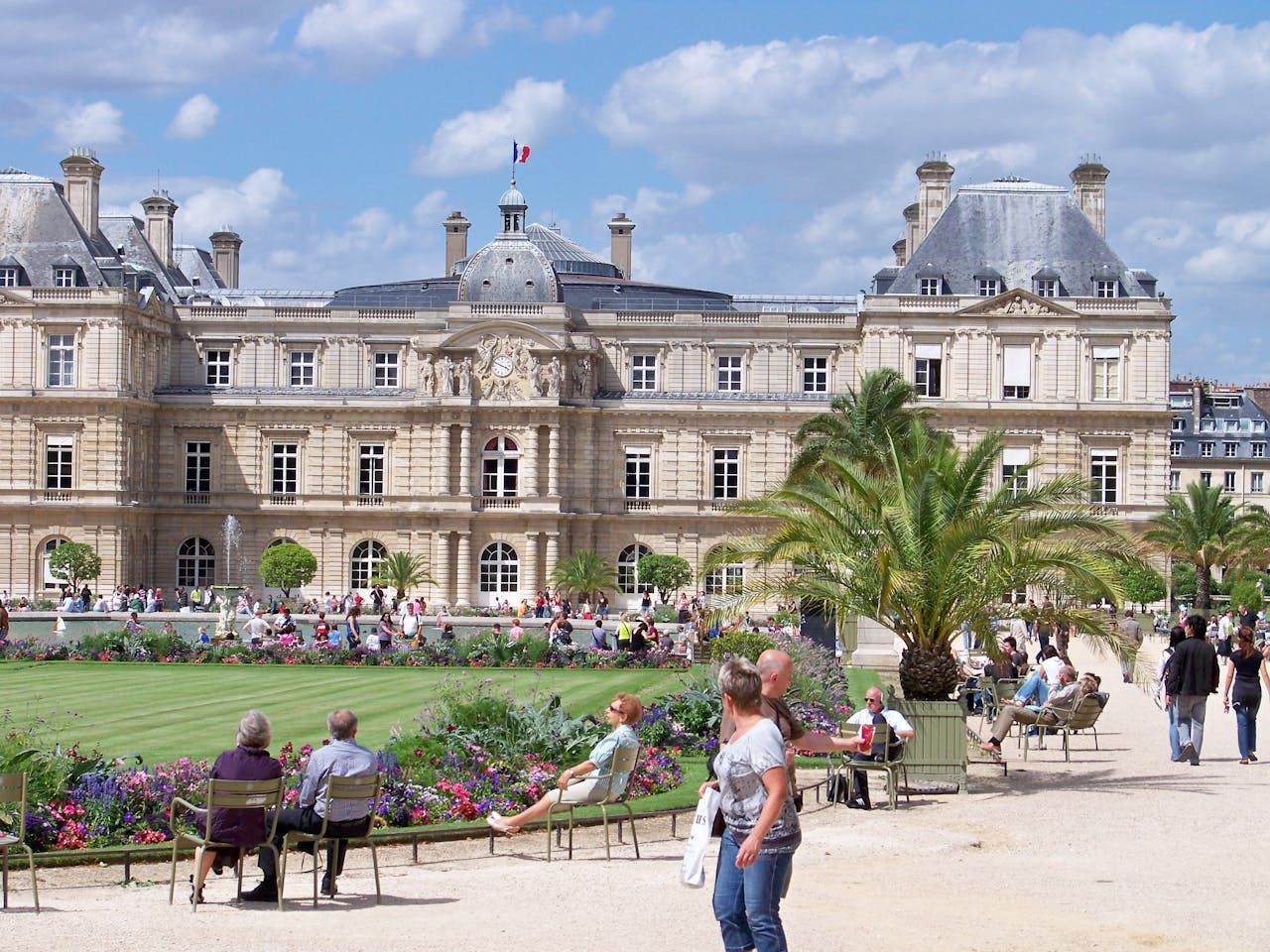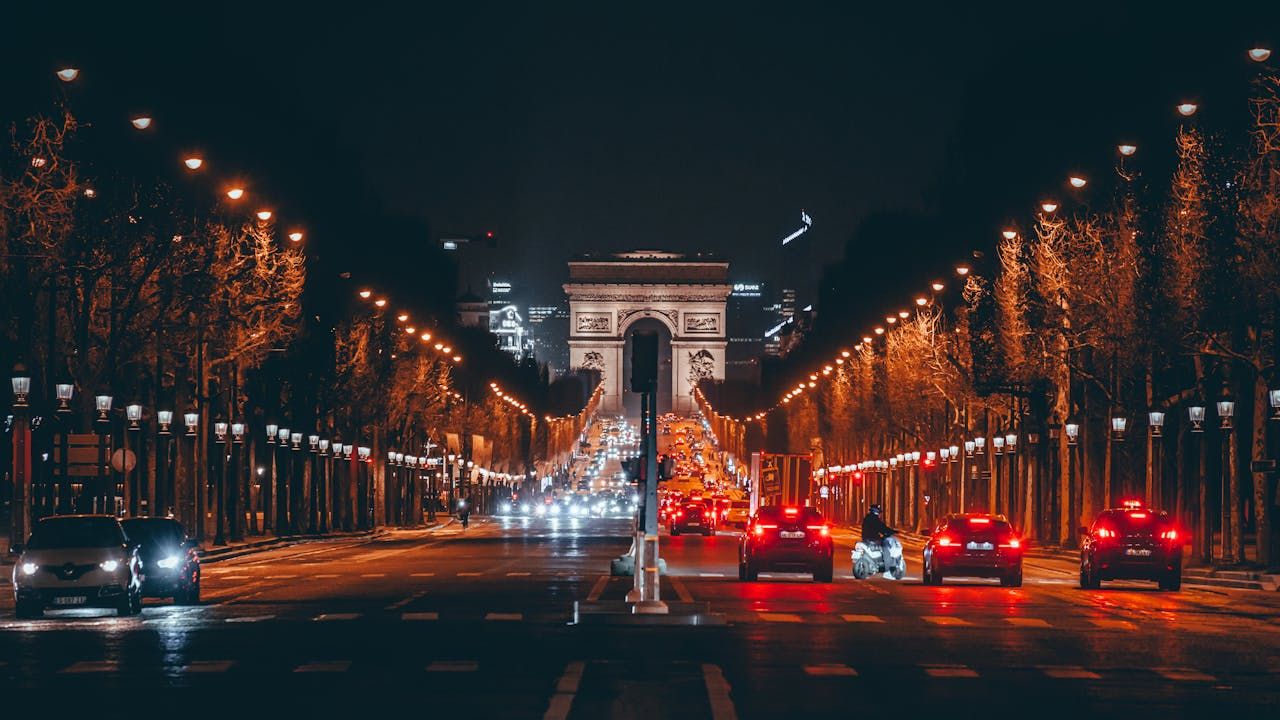Paris has a reputation: the city of lights, love, croissants, and stylish people riding vintage bikes along the Seine. It’s the kind of place that lives large in our imaginations thanks to movies, books, and social media.
But if you’ve ever actually been, or talked to someone who has, you probably know the truth can be… a little different. Yes, Paris can be beautiful and romantic. But it can also be crowded, expensive, and occasionally underwhelming.
In this guide, we’ll cut through the noise and give you a straight answer: Is Paris still worth the trip? If you’re dreaming of Paris or already planning your itinerary, here’s the honest truth to help you decide if now’s the right time to go.

If you’re traveling to Paris soon, grab a free eSIM from Yoho Mobile. You’ll land with instant data access for Google Maps, restaurant reviews, and transit apps, no roaming fees or airport SIM card hassle. When you’re ready to upgrade, use the code YOHO12 for 12% off your eSIM plan!
Paris in 2025: What’s Changed and What Hasn’t
Paris continues to charm visitors in 2025. Landmarks like the Eiffel Tower, Montmartre, and the Louvre still draw crowds year after year. The Eiffel Tower remains a must-see, offering the same impressive views and structure that have made it famous. The Louvre is still one of the world’s top museums, home to masterpieces like the Mona Lisa and Venus de Milo, with its main exhibits unchanged. Other well-known sites like Notre-Dame Cathedral, the Arc de Triomphe, and Palais des Invalides also continue to hold cultural and historical importance.
Beyond these iconic destinations, Paris has neighborhoods that many tourists don’t know about, where local life feels more real. Belleville is full of colorful street art and food from many cultures. Butte-aux-Cailles feels like a small village with quiet streets and local cafés. Aligre Market is a busy place where Parisians shop for fresh food and eat at small, affordable spots. These areas show a different, timeless side of Paris that hasn’t changed even in recent years.
At the same time, Paris is evolving. The city has seen many changes recently, especially following the 2024 Olympics and ongoing efforts to become more sustainable and visitor-friendly.
Gare du Nord, Gare de Lyon, Gare d’Austerlitz, and Gare Montparnasse, the city’s four major train stations, have been renovated to have updated exteriors, more shops, and better facilities. France has invested €6.5 billion to expand high-speed rail lines, making train travel more eco-friendly and attractive. As a result, a new and more efficient version of the TGV called the TGV M is now in service, carrying more passengers while using less energy.
A major upgrade to the city’s sewer system—costing €1.4 billion—has made it possible (and safer) to swim in the Seine. In 2025, three new swimming areas were opened: Bras Marie, Bras de Grenelle, and Bercy. These are like urban beaches and build on the success of the Olympic test run and the annual Paris Plages summer event.
In 2025, Paris museums have a lot of new exhibits and events planned, with digital art shows at the Grand Palais, rétrospectives at the Musée Marmottan and Centre Pompidou, and themed exhibits at the Musée d’Orsay and Atelier des Lumières. The city is also hosting popular festivals, including Taste of Paris (May), Fête de la Musique (June), and the Montmartre Harvest Festival (October).
Among the city’s cultural highlights, the Fondation Cartier has reopened in a new location near the Louvre, adding a fresh art destination to the city. The Olympic Cauldron, a favorite from the Games, is now a free evening event in the Jardin des Tuileries (reservations are needed during busy times).
What’s Declining
In 2025, some parts of visiting Paris will not be as good as they used to be. Popular tourist spots like the Eiffel Tower, the Louvre, and Montmartre are often overcrowded. Even with efforts to control crowds through timed tickets and more entrances, busy times still see long lines and packed areas. Compared to about ten years ago, Paris feels more crowded and less easy to enjoy. Back then, public spaces weren’t as packed, and tourism and local life were better balanced.
Cleanliness has also become a problem in some places. While the main tourist areas and newly pedestrianized zones are cleaned regularly and often look well-kept, other neighborhoods and public spaces don’t get the same level of attention. This is especially true in high-traffic areas like certain metro stations and market streets, where litter and street upkeep can still fall short. The city has launched initiatives like the “Paris Propre” campaign and uses tools like the “Dans ma rue” app to report issues, along with special cleaning teams, but it’s still not perfect.
Prices for things like hotels and restaurants have gone up, making it harder for budget travelers to visit. Also, some longtime local shops and businesses have been replaced by places that mostly cater to tourists. Overall, Paris still has many attractions, but problems with crowds, cleanliness, and affordability have made the visit less enjoyable.
You Might Also Like to Read:
- What to Do in Paris For a Night
- What to Do on a Rainy Day in Paris
- How to Spend 3 Wonderful Days in Paris
Is Paris Still the City of Light or a City of Hype?
When most people think of Paris, they picture a city full of romance, charm, and beauty. Thanks to movies, books, and Instagram, we imagine sitting at a cozy café, seeing the Eiffel Tower sparkle at night, and meeting friendly locals who make the city feel magical. But when you actually get there, things can feel pretty different.
Instead of quiet, charming streets, you might find crowds everywhere, busy tourist spots, and locals who seem a bit brusque or impatient. The city is noisy, and there’s the usual hustle and bustle, maybe even some litter. Parisians can come off as direct or even a little cold, which can be surprising if you’re used to a different style of friendliness. If you don’t speak French, it’s easy to feel lost or isolated.
For some, this shock between what they imagined and what they experience can be a real letdown. To the extent that there’s even something called “Paris Syndrome”, where the shock of the difference between expectation and reality causes anxiety, dizziness, or feeling completely out of place. Some people get so overwhelmed that they need medical help. It sounds extreme, but it shows just how big the difference can be for some visitors.
That said, Paris still has amazing history, incredible food, and beautiful art around every corner. It’s not perfect, but knowing that upfront can really help you enjoy your trip more. For many visitors, the key to enjoying Paris lies in how you approach it. Some travelers find joy in wandering without an agenda, getting up early to see the sights before the crowds arrive, or simply letting themselves get lost in quieter neighborhoods.
Families, too, have found ways to make it work. Some adapt by choosing experiences that engage all ages and booking multi-day itineraries that leave room for breaks and downtime. Others note that Paris is surprisingly stroller-friendly in most areas, except in Metro stations, which often lack elevators.
Despite the city’s imperfections, many leave with fond memories. The secret is going in with your expectations balanced in a more real and less dreamy way than the movies might make you think. Yes, it’s crowded. Yes, it’s fast-paced. And no, it probably won’t feel like the movie version. But if you’re willing to let go of the fantasy and meet the real Paris where it is, you might find it even more memorable.
Who Paris Is For (And Who It Isn’t)
Paris is a great destination for art and history lovers, with its many museums, galleries, and historic sites like the Louvre, the Musée d’Orsay, and Notre-Dame. Those interested in cultural heritage can explore UNESCO sites and attend a variety of art exhibitions. Food enthusiasts will also enjoy Paris, thanks to its diverse culinary scene that includes everything from classic bistros to food festivals and specialty markets.
Beyond the well-known tourist spots, the city offers exciting dining options such as “bistronomy”, a blend of traditional bistro charm and modern culinary techniques, found in non-touristy places like Grand Cœur and Pimpan. Natural wine bars, popular in neighborhoods like the 11th arrondissement and the Marais, provide a relaxed way to taste organic, biodynamic wines paired with small plates. For those with a sweet tooth, Paris also has local dessert spots offering creative alternatives to classic treats like macarons and éclairs. Photographers are also drawn to the city for its iconic landmarks, varied architecture, and ever-changing light.
But Paris isn’t for everyone. For tight budgets, the city can feel expensive fast as affordable places to stay are getting harder to find, and the cost of eating out or visiting major attractions adds up quickly. For digital nomads or remote workers, Paris might not be the easiest place to settle in. It’s busy, it’s loud, and finding a quiet space to focus can be a challenge. And for those craving peace and quiet, the constant motion and noise of the city can be overwhelming.
Is Paris Worth the Cost?
Is Paris worth the cost in 2025? The answer really depends on your travel style, because prices vary quite a bit between luxury, mid-range, and budget options.
For places to stay, luxury hotels run from around $230 up to $440 a night, especially in fancy neighborhoods like the 4th and 7th arrondissements. If you book about three weeks ahead, you might get a better deal. Mid-range hotels are more affordable, between $120 and $220 per night, and you’ll find comfortable spots right in the heart of the city, like the Latin Quarter or Le Marais, which makes getting around and seeing sights easy. If you’re traveling on a tight budget, hostels and cheap hotels can cost as little as €25 per night, especially if you stay a bit outside the main tourist areas, like near Porte d’Orléans or Versailles. Dorm beds in hostels are around €25-40, and budget hotels tend to be €80-120 a night.
When it comes to food, dining out in style can easily cost €130-225 a day if you choose well-known restaurants. But for casual meals and cafés, €58-77 daily usually covers it. On a shoestring budget, you can get by with about €28-40 a day by grabbing food from markets, bakeries, or fast-casual spots. For example, a typical lunch at a café or bistro will cost you around €15-25, and a coffee usually goes for €3-5.
Getting around the city is pretty affordable with a single metro ride at €1.90. If you’re spending a few days, budget travelers might spend €15-25 on public transport, while mid-range travelers will probably budget around €22.50-40. Luxury travelers, who prefer taxis or private rides, might spend €90-150 on transportation. When it comes to museums and attractions, ticket prices usually fall around €15-20 each.
Flights aren’t included in these numbers, but overall, Paris can fit a variety of budgets. So yes, Paris can be worth the cost, it just depends on how you want to experience the city.
That said, Paris is generally more expensive than other European cities like Rome, Lisbon, Berlin, and Prague. For example, rent and dining out tend to cost quite a bit more there. A one-bedroom apartment in the city center runs about 32% higher than in Rome, and a cappuccino in Paris can be almost three times the price you’d pay in Rome. Even public transport fares are higher. But what Paris offers in return is a unique cultural experience with world-class museums, historic landmarks, and a well-connected public transit system that many travelers find worth the extra cost.
Tourist Scams
Pickpocketing is still the most frequent issue tourists face, especially on busy metro lines like Line 1 and RER A. Areas near major landmarks like the Eiffel Tower, Notre-Dame, Montmartre, and train stations like Gare du Nord and Châtelet tend to attract pickpockets. In fact, most incidents happen along Line 1 between Étoile and Tuileries, and on Line 8 between Opéra and Concorde.
Another scam that’s been around for a while is the bracelet trick near the Sacré-Cœur, where someone ties a string bracelet on your wrist and then demands money. If someone approaches you like this, it’s best to say no firmly and walk away. Another common scam involves fake petitions where someone asks you to sign something for a “charity,” then either pressures you for a donation or uses the distraction to pickpocket you.
Some neighborhoods, especially in the north of the city near Gare du Nord or certain streets in the 18th arrondissement around Montmartre, can feel a bit sketchy after dark. If you’re traveling alone, stick to well-lit, busy areas and use trusted transport options like Uber or Bolt rather than hailing a taxi on the street.
Paris is still a beautiful and unforgettable place to visit. With a bit of caution and preparation, you can avoid most problems and focus on enjoying everything the city has to offer.
Final Verdict: Should You Visit Paris in 2025?
Paris in 2025 is still an exciting place to visit, especially if you’re into history, art, and amazing food. The city is full of famous spots like the Eiffel Tower, the Louvre, and Montmartre, and there are also new exhibits and updated museums to explore. It’s not a cheap trip, but if you budget carefully or are willing to spend a bit more, you’ll have plenty to enjoy
But if you’re after peace and quiet or are on a tight budget, you might want to think twice. In the end, whether you love Paris or not really comes down to what you’re looking for.
FAQs
Do I need to speak French in 2025?
Not really. If you’re just visiting Paris for a short trip, you don’t need to know French or take any kind of test. But if you plan to live there long-term, it’s a different story. From 2026, you’ll need basic French (A2 level) for a multi-year residence permit. For a 10-year card, you’ll need to speak at an intermediate level (B1), and if you want to become a citizen, you’ll need to be pretty fluent (B2). Still, learning a few simple phrases and greetings will help a lot during your stay.
What’s the most overrated tourist spot in Paris?
Many people say the top of the Eiffel Tower is the most overrated. It often has long lines, and the view can be blocked by clouds or bad weather. The second floor is easier to reach and still offers great views. Other spots that some find underwhelming include the super-crowded Place du Tertre in Montmartre and the Champs-Élysées, which can feel very commercial.
Can I really see Paris on €75 a day?
Yes, but you’ll need to plan carefully. Staying in a shared hostel room can cost around €30. You can grab cheap breakfasts at bakeries and put together simple lunches from local markets. A multi-day transport pass might cost €15–25 for three days. Many museums are free on certain days, and there are plenty of parks and sights you can enjoy for free. It’s tight, but doable!
What do locals do on weekends?
Parisians enjoy local events, markets, and festivals. In summer, you’ll find things like Paris Plages (a pop-up beach) and open swimming in the Seine. There are food festivals, concerts, and street fairs throughout the year, like Taste of Paris in May and the Montmartre harvest festival in October. People also hang out in parks, visit exhibitions, or catch a concert or play in the evening.
Are day trips from Paris worth it, or should I stay somewhere else?
Day trips from Paris are a great idea if you want to see places like Versailles, Giverny, or the Champagne region. They’re close enough for a short trip and offer something different. But if you’d rather take it slow or focus on one area, staying in a smaller town might suit you better. Paris itself has plenty to explore, so think about what kind of pace and experiences you want.
Is Paris friendly to tourists?
While Parisians may seem a bit reserved, the French are generally friendly and helpful toward tourists. Speaking some basic French and being polite can significantly improve your interactions.
How long to stay in Paris?
A stay of 3 to 5 days is a good time frame to see the main sights and get a feel of the city. With a week or more, you can relax and wander through more neighborhoods, discovering some of Paris’s lesser-known charms.
Is Paris Worth Visiting in Winter?
Visiting Paris in winter has its pros and cons. The city is much less crowded, making it easier to see the main attractions without long waits. Also, holiday markets and decorations add to the city’s charm. On the other hand, the cold and damp weather can be a drawback for outdoor activities.



